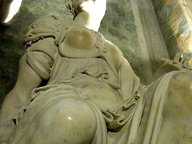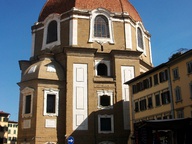Vatican Chapels - Pavilion of the Holy See
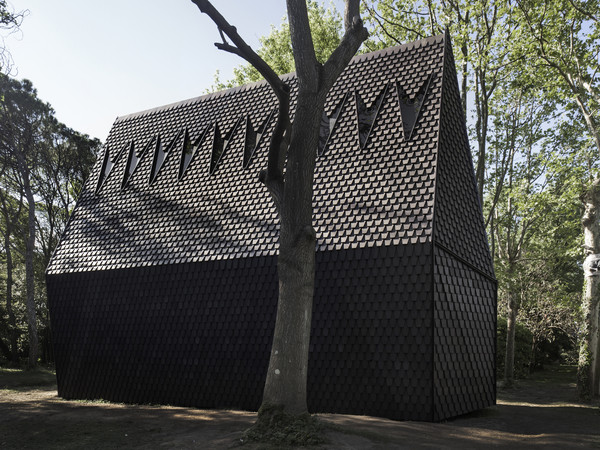
Francesco Magnani and Traudy Pelzel, architects, with Piero Lissoni for ALPI, Asplund Pavilion | Photo: © Alessandra Chemollo
From 26 Maggio 2018 to 25 Novembre 2018
Venice
Place: Fondazione Cini
Address: Isola di San Giorgio Maggiore
Times: Mar - Dom 10 - 18 | Lun chiuso (esclusi Lun 28 Mag / 13 Ago / 3 Set / 19 Nov)
Responsibles: Francesco dal Co
Telefono per informazioni: +39 041 2710229
E-Mail info: segr.gen@cini.it
Official site: http://www.cini.it/events/vatican-chapels-padiglione-della-santa-sede-alla-16-mostra-internazionale-di-architettura
For the 16th International Architecture Exhibition of the Venice Biennale (26 May – 25 November 2018), ALPIhas been selected as one of the producers of the first Pavilion of the Holy See, Vatican Chapels, at Fondazione Cini on the Island of San Giorgio Maggiore.
In the context of this project ALPIhas built the Asplund Pavilion by the architectsFrancesco Magnani and Traudy Pelzel,conceived as the introduction to the Pavilion of the Holy See.
Vatican Chapels,curated by Francesco Dal Co, unfolds in an exhibition itinerary through eleven works of architecturecreated by eleven architecture firms, starting with the model of the Woodland Chapel designed in 1920 by the famous architect Gunnar Asplundin the Woodland Cemetery of Stockholm, prompting reflections on the chapel typology, which the Swedish architect defined as“a place of orientation, encounter, meditation and salutation.”
The Asplund Pavilion produced by ALPI embodies the essence of the project in the architecture of the building itself, based on the vocabulary of traditional Scandinavian wooden constructions– “stave churches” – and containing an exhibition of original drawings by Gunnar Asplundfor the Woodland Chapel.
The architectural structure – with a length of about 11 and a height of 8 meters – is organized as a prismatic formsimilar to that of a crystal, and entirely clad in ALPI wood. The company has developed an experimentalmaterial used for the external facings of the construction, made with 9000 wood shinglesthat enhance the external image of the building; the interior is completely faced in ALPI Xilo 2.0 Striped White,developed in collaboration with Piero Lissoni, to create a muted, intimate atmosphere.
“The surfaces we have produced for this project, both outside and inside, are very different from each other; the characteristics of each are enhanced in their juxtaposition. While for the interior the architects Magnani and Pelzel have chosen one of our most successful Xilo woods, for the exterior they asked me to create a completely new product: dark gray shingles, “like a dragon’s skin,” as Francesco Magnani so effectively puts it.”
Vittorio Alpi
The Asplund Pavilion represents another emblematic example of the company’s intense relationship with the world of design,in which material and cultural quality and a unique approach to projects formulate new aesthetic dimensions in relation to the product.
ALPIexplores this world through the transformation and evolution of materials, redefining their intrinsic characteristics and offering different materic realitiesbased on the world of nature – absolutely evocative in terms of forms and colors – and the world of design par excellence, marked by great originality and visual impact.
The ongoing formal and stylistic research on wood materials is reflected in the company’s approach of concentration and passion for the visual arts and the world of design, through innovative and original offerings combined with cultural projects connected with the material.
“For the Asplund Pavilion, in just a few months we have developed this experimental product that is a complete novelty in the context of our output. This is the type of challenge that stimulates us, to achieve beauty while solving new technical problems, one by one, as they arise. This time the challenge was not easy, but we accepted it with enthusiasm, and we are very pleased to have gotten beyond what we believed were some of our limitations. All of us at the company are proud to have made a contribution to this exceptional project with our work.”
Vittorio Alpi
In the context of this project ALPIhas built the Asplund Pavilion by the architectsFrancesco Magnani and Traudy Pelzel,conceived as the introduction to the Pavilion of the Holy See.
Vatican Chapels,curated by Francesco Dal Co, unfolds in an exhibition itinerary through eleven works of architecturecreated by eleven architecture firms, starting with the model of the Woodland Chapel designed in 1920 by the famous architect Gunnar Asplundin the Woodland Cemetery of Stockholm, prompting reflections on the chapel typology, which the Swedish architect defined as“a place of orientation, encounter, meditation and salutation.”
The Asplund Pavilion produced by ALPI embodies the essence of the project in the architecture of the building itself, based on the vocabulary of traditional Scandinavian wooden constructions– “stave churches” – and containing an exhibition of original drawings by Gunnar Asplundfor the Woodland Chapel.
The architectural structure – with a length of about 11 and a height of 8 meters – is organized as a prismatic formsimilar to that of a crystal, and entirely clad in ALPI wood. The company has developed an experimentalmaterial used for the external facings of the construction, made with 9000 wood shinglesthat enhance the external image of the building; the interior is completely faced in ALPI Xilo 2.0 Striped White,developed in collaboration with Piero Lissoni, to create a muted, intimate atmosphere.
“The surfaces we have produced for this project, both outside and inside, are very different from each other; the characteristics of each are enhanced in their juxtaposition. While for the interior the architects Magnani and Pelzel have chosen one of our most successful Xilo woods, for the exterior they asked me to create a completely new product: dark gray shingles, “like a dragon’s skin,” as Francesco Magnani so effectively puts it.”
Vittorio Alpi
The Asplund Pavilion represents another emblematic example of the company’s intense relationship with the world of design,in which material and cultural quality and a unique approach to projects formulate new aesthetic dimensions in relation to the product.
ALPIexplores this world through the transformation and evolution of materials, redefining their intrinsic characteristics and offering different materic realitiesbased on the world of nature – absolutely evocative in terms of forms and colors – and the world of design par excellence, marked by great originality and visual impact.
The ongoing formal and stylistic research on wood materials is reflected in the company’s approach of concentration and passion for the visual arts and the world of design, through innovative and original offerings combined with cultural projects connected with the material.
“For the Asplund Pavilion, in just a few months we have developed this experimental product that is a complete novelty in the context of our output. This is the type of challenge that stimulates us, to achieve beauty while solving new technical problems, one by one, as they arise. This time the challenge was not easy, but we accepted it with enthusiasm, and we are very pleased to have gotten beyond what we believed were some of our limitations. All of us at the company are proud to have made a contribution to this exceptional project with our work.”
Vittorio Alpi
SCARICA IL COMUNICATO IN PDF
COMMENTI

-
 Dal 31 ottobre 2024 al 24 febbraio 2025
Milano | Fondazione Prada
Dal 31 ottobre 2024 al 24 febbraio 2025
Milano | Fondazione Prada
-
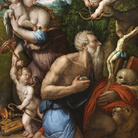 Dal 31 ottobre 2024 al 02 febbraio 2025
Arezzo | Galleria d’Arte Contemporanea / Sala Sant’Ignazio
Dal 31 ottobre 2024 al 02 febbraio 2025
Arezzo | Galleria d’Arte Contemporanea / Sala Sant’Ignazio
-
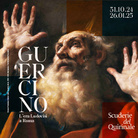 Dal 31 ottobre 2024 al 26 gennaio 2025
Roma | Scuderie del Quirinale
Dal 31 ottobre 2024 al 26 gennaio 2025
Roma | Scuderie del Quirinale
-
 Dal 01 novembre 2024 al 15 febbraio 2025
Torino | PAV - Parco Arte Vivente
Dal 01 novembre 2024 al 15 febbraio 2025
Torino | PAV - Parco Arte Vivente
-
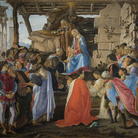 Dal 29 ottobre 2024 al 02 febbraio 2025
Milano | Museo Diocesano Carlo Maria Martini
Dal 29 ottobre 2024 al 02 febbraio 2025
Milano | Museo Diocesano Carlo Maria Martini
-
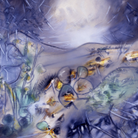 Dal 25 ottobre 2024 al 23 marzo 2025
Venezia | Ca’ Pesaro – Galleria Internazionale d’Arte Moderna
Dal 25 ottobre 2024 al 23 marzo 2025
Venezia | Ca’ Pesaro – Galleria Internazionale d’Arte Moderna


